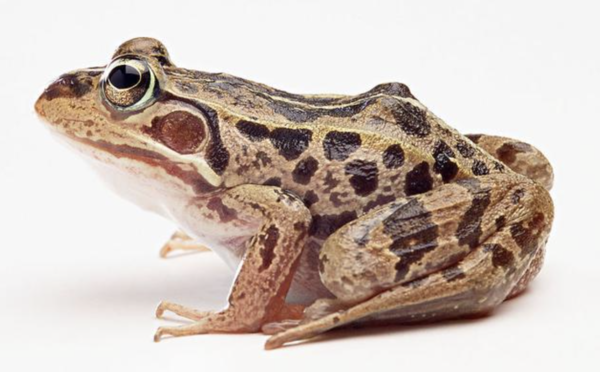Frogs, as amphibians, have fascinating and unique ways of breathing that set them apart from other animals. Understanding how frogs breathe involves exploring their specialized respiratory systems and their ability to adapt to both aquatic and terrestrial environments. In this article, we will delve into the different ways frogs breathe, including their cutaneous respiration, pulmonary respiration, and buccopharyngeal respiration, while highlighting how these processes help them thrive in diverse environments.

Frogs, like other amphibians, have an intricate respiratory system that allows them to breathe in multiple ways, depending on their environment. Frogs rely on several methods of respiration to ensure they get enough oxygen in both aquatic and terrestrial settings. These include cutaneous respiration (through the skin), buccopharyngeal respiration (through the mouth and throat), and pulmonary respiration (using their lungs).
One of the most unique features of frogs is their ability to breathe through their skin, a process known as cutaneous respiration. Frogs have highly vascularized skin, meaning it is rich in blood vessels that allow gases to diffuse across the skin. This allows frogs to absorb oxygen directly from the surrounding water or air and expel carbon dioxide.
Frogs absorb oxygen through their skin when submerged in water or when their skin is moist in a terrestrial environment.
Water or moisture in the environment is crucial for the skin to facilitate oxygen exchange, as dry skin does not allow gases to pass through efficiently.
Cutaneous respiration is especially important for aquatic species of frogs, as it allows them to stay submerged for long periods without the need to surface for air.
In addition to cutaneous respiration, frogs also breathe using their lungs, a process known as pulmonary respiration. However, unlike mammals, frogs have relatively simple lungs that do not provide the same level of oxygen exchange. Frogs typically rely on their lungs only when they are on land or in situations where cutaneous respiration is not sufficient.
Frogs inhale air through their nostrils, which then passes into the mouth and down into the lungs.
The lungs are relatively small in frogs compared to their body size, which means they must rely more on their skin for oxygen exchange than mammals.
Frogs have a unique method of breathing known as positive pressure ventilation. They actively force air into their lungs by closing their nostrils and mouth, then expanding their throat (buccal cavity) to push the air down into the lungs.
Another fascinating method of respiration in frogs is buccopharyngeal respiration, where frogs can absorb oxygen through the lining of their mouth and throat. This process happens when the frog opens its mouth, allowing air to pass into the mouth cavity and oxygen to diffuse into the bloodstream.
Frogs can breathe through the mucous membranes in the mouth and throat, which are rich in blood vessels.
This type of respiration is most often used when a frog is resting or when it needs a quick supply of oxygen without relying solely on its lungs or skin.
Buccopharyngeal respiration is particularly important during aerial breathing, allowing frogs to absorb oxygen in the absence of water.
Frogs are highly adaptable creatures, and their ability to breathe through multiple systems allows them to thrive in diverse environments. Whether in water or on land, frogs have developed specific adaptations to ensure they receive the oxygen they need to survive.
In aquatic environments, frogs rely heavily on cutaneous respiration to absorb oxygen from the water. This is particularly beneficial when frogs are submerged for long periods.
When frogs are on the surface of the water, they may inhale air through their nostrils (pulmonary respiration) or utilize buccopharyngeal respiration to exchange gases.
On land, frogs rely more on pulmonary respiration and buccopharyngeal respiration, especially when the environment is dry and the skin cannot effectively absorb oxygen.
Frogs in arid or semi-arid regions may have evolved to spend more time in moist areas, such as under leaves or in burrows, to facilitate cutaneous respiration.
| Respiration Type | Method of Breathing | Key Characteristics |
|---|---|---|
| Cutaneous Respiration | Breathing through the skin | Oxygen is absorbed through moist, vascularized skin. Important for aquatic species. |
| Pulmonary Respiration | Breathing through the lungs | Frogs inhale air into their lungs via nostrils. Requires positive pressure ventilation. |
| Buccopharyngeal Respiration | Breathing through the mouth and throat | Oxygen is absorbed through the mucous membranes in the mouth and throat. Useful in aerial environments. |
Frogs' ability to use multiple respiratory systems allows them to adapt efficiently to their environment, whether they are underwater, on land, or transitioning between both. Their specialized methods of respiration are key to their survival and success in a wide range of habitats.
Frogs are remarkable creatures that have evolved various ways to breathe, allowing them to survive in diverse environments. From cutaneous respiration through their skin to pulmonary respiration via their lungs and buccopharyngeal respiration through their mouth and throat, frogs have developed complex systems that enable them to thrive in both aquatic and terrestrial habitats. This multi-faceted approach to breathing ensures that frogs can effectively absorb oxygen in almost any condition, making them one of the most adaptable animals on the planet.
animal tags: Batrachia
We created this article in conjunction with AI technology, then made sure it was fact-checked and edited by a Animals Top editor.